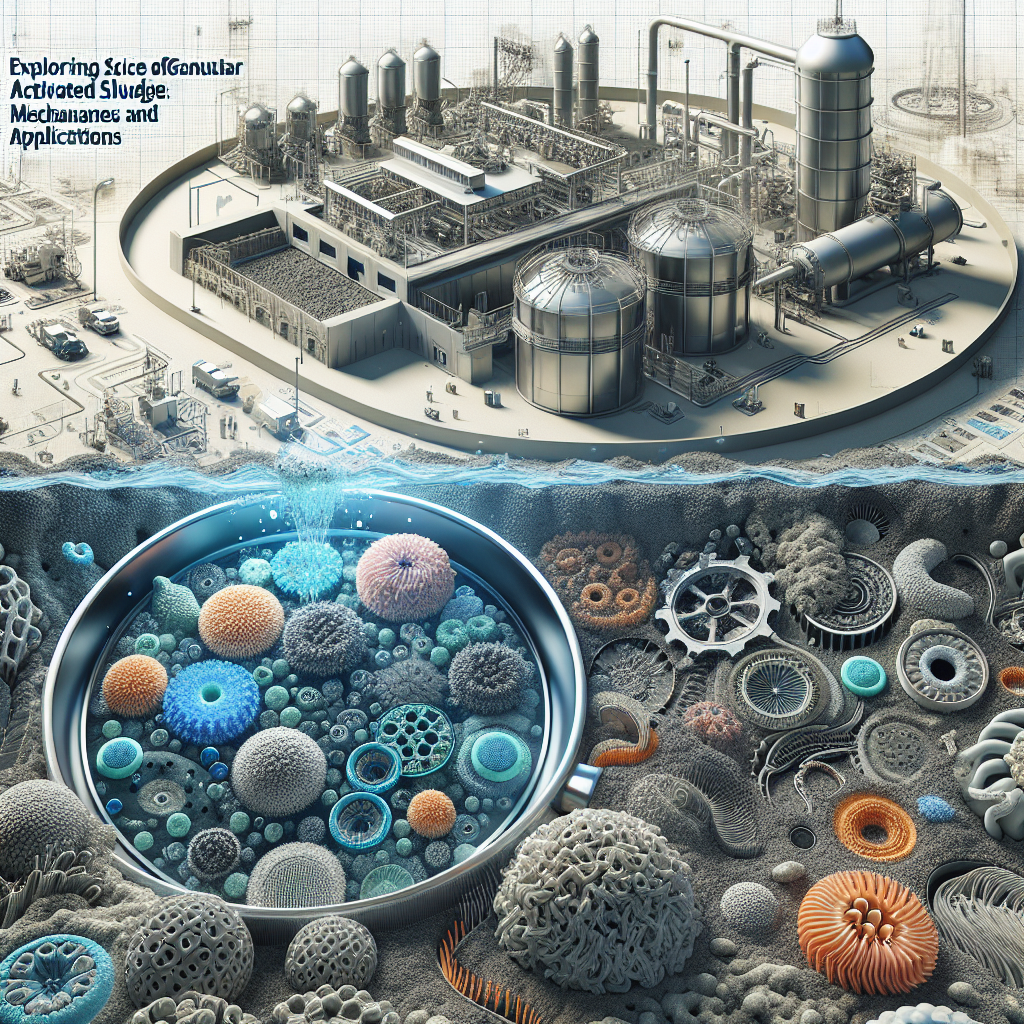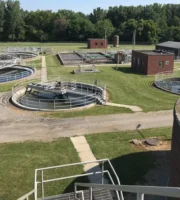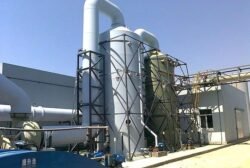Exploring the Science of Granular Activated Sludge: Mechanisms and Applications

Exploring the Science of Granular Activated Sludge: Mechanisms and Applications
Introduction
“`html
Introduction
Welcome to the fascinating world of granular activated sludge, a revolutionary advancement in the realm of wastewater treatment. If you’re new to this topic, you might be wondering why sludge is getting so much attention. Trust us, this isn’t just any sludge; it’s the superhero of sewage—capable of improving effluent quality and enhancing the sustainability of our water purification systems.
Granular activated sludge is part of a cutting-edge approach that builds on the traditional activated sludge process. This method has been a staple in wastewater treatment for decades, but with granular technology, we’re stepping up our game. Think of it as upgrading from a flip phone to a smartphone; both work, but one does it with more style and efficiency!
The secret ingredient? Granules! These compact structures offer several advantages over conventional flocculent activated sludge. For one, they’re great at settling down—literally. The improved settleability means they can be used in more compact wastewater treatment plants, making them ideal for urban environments where space is at a premium.
- Nutrient Removal: Granular sludge excels in biological nutrient removal systems, effectively tackling both nitrification and denitrification.
- Organic Load Reduction: It boasts an impressive ability to degrade organic matter, improving overall effluent quality.
- Sustainable Management: By optimizing sludge retention time and fostering a robust microbial community, granular systems enhance sustainable wastewater management practices.
As we delve deeper into this innovative technology, we’ll explore how aerobic granules form, the mechanisms behind their superior performance, and their compatibility with other advanced water treatment processes like anaerobic digestion. So buckle up for an intriguing journey into the science behind these powerful little granules!
“The science of today is the technology of tomorrow.” – Edward Teller
This quote perfectly encapsulates the potential that granular activated sludge holds for transforming our approach to environmental engineering and efficient pollutant removal strategies. Let’s dive into this exciting frontier together!
“`
What is Granular Activated Sludge?
“`html
What is Granular Activated Sludge?
If you’re wondering whether granular activated sludge (GAS) is just another fancy buzzword in the vast realm of wastewater treatment, think again! This innovative technology is transforming the way we approach sewage management, making it more efficient and environmentally friendly.
Granular activated sludge is a type of microbial community that forms dense, compact granules rather than the typical fluffy flocs found in conventional activated sludge processes. These granules offer several advantages, including enhanced nutrient removal, improved sludge settleability, and reduced footprint requirements for wastewater treatment plants. They essentially act like tiny eco-warriors, battling pollution one granule at a time!
Key Characteristics of Granular Activated Sludge:
- High Biomass Concentration: Due to their compact structure, these granules can hold more biomass per unit volume compared to traditional flocs.
- Superior Settling Properties: Their denser nature allows for faster settling rates, leading to better solid-liquid separation.
- Nutrient Removal Efficiency: Granules are excellent at removing nutrients like phosphorus and nitrogen through processes such as nitrification and denitrification.
The science behind GAS focuses on maintaining a delicate balance within the microbial ecosystem. It involves understanding the mechanisms of granule formation and how various factors like organic load reduction and sludge retention time impact its performance. According to a study published in the journal Water Research, aerobic granular sludge systems demonstrated up to 90% efficiency in chemical oxygen demand (COD) reduction under specific conditions.
Granular activated sludge systems are revolutionizing biological wastewater treatment by optimizing nutrient removal while minimizing energy consumption.” – Water Research Journal
Apart from being scientifically fascinating, these mini marvels are also quite practical. They enhance the overall performance of compact wastewater treatment plants and offer sustainable management practices. In essence, they bridge the gap between advanced water treatment processes and real-world applications, contributing significantly to efficient pollutant removal strategies.
Whether you’re an environmental engineer or just someone curious about how your local sewage treatment plant operates, understanding granular activated sludge opens up a world of innovative possibilities in biological wastewater treatment.
“`
The Science Behind Granule Formation
“`html
The Science Behind Granule Formation
If you’ve ever found yourself wondering how wastewater treatment plants manage to transform something as unappealing as sewage into safe, purified water, you’re not alone. The magic lies in the microscopic world of granular activated sludge. This process is nothing short of fascinating, involving complex biological and chemical interactions. Let’s dive in!
The Microbial Symphony
At the heart of granule formation is a vibrant microbial community. These microorganisms are like a well-rehearsed orchestra, working in harmony to break down organic matter and pollutants. Bacteria, fungi, and other microscopic creatures clump together to form robust granules. These granules are more compact than traditional flocs found in other sludge processes.
- Aerobic Bacteria: These little workhorses thrive on oxygen and play a crucial role in the initial stages of granule formation.
- Anaerobic Bacteria: Don’t let their dislike for oxygen fool you; they are essential for breaking down organic compounds under low-oxygen conditions.
- Fungi: Though often overlooked, fungi help bind the microbial matrix together, contributing to the stability of the granules.
The Role of Biofilm
The initial phase of granule formation involves biofilm development. Biofilms act like an adhesive, allowing microorganisms to stick together on surfaces within bioreactors. Think of them as the glue holding everything together while enabling efficient nutrient removal and organic matter degradation.
This sticky situation actually has some amazing benefits:
- Improved Settling Characteristics: Granules settle quickly due to their density, enhancing sludge settleability.
- Nutrient Removal Efficiency: The packed structure improves nitrification and denitrification processes, crucial for removing nitrogen compounds effectively.
Sewage Treatment’s Secret Weapon: Time
Sludge retention time (SRT), or how long these microscopic marvels stay in the system, plays a pivotal role in granule development. Longer SRTs allow microorganisms more time to mature and form stable aggregates—think of it as giving them time to perfect their symphony performance!
“The granular activated sludge technology represents a paradigm shift in wastewater treatment by harmonizing nature’s processes with engineered systems.” – Unknown Scientist
This understanding of microbial ecology is transforming environmental engineering practices globally. Compact wastewater treatment plants employing granular sludge systems offer sustainable solutions for efficient pollutant removal strategies—a win-win for us and our planet!
“`
Mechanisms of Granular Activated Sludge
“`html
Mechanisms of Granular Activated Sludge
When it comes to wastewater treatment, granular activated sludge (GAS) is like the multi-talented performer in a variety show, seamlessly juggling multiple tasks with flair. But how exactly does this aerobic granular sludge work its magic? Let’s dive into the heart of its mechanisms.
The Marvelous Granule Formation
The formation of granular biomass is where the magic begins. Unlike the floc-based systems used in traditional activated sludge processes, GAS forms compact, dense granules. These granules are essentially a conglomeration of microorganisms that self-aggregate into a stable structure, much like assembling a Lego masterpiece without losing any pieces down the couch cushions.
- Microbial Community Dynamics: The granules harbor a complex microbial community that interacts symbiotically. These microorganisms perform essential functions such as nitrification and denitrification, vital for nutrient removal from wastewater.
- Biofilm Characteristics: Each granule acts as a biofilm reactor where organic matter degradation takes place effectively. This allows for efficient pollutant removal strategies and improved effluent quality without needing enormous infrastructure.
The Role of Sludge Retention Time (SRT)
SRT in granular systems is akin to letting fine wine age – the longer it stays, the more refined and stable it becomes. By extending SRT, GAS ensures that only well-settled granules remain in the system, enhancing sludge settleability and optimizing nutrient removal.
Aerobic Granules: The Hardworking Heroes
Aerobic granules are powerhouse performers in compact wastewater treatment plants. They exhibit remarkable organic load reduction capabilities due to their high density and excellent settling characteristics compared to conventional suspended growth reactors.
Granular activated sludge is revolutionizing biological wastewater treatment with its ability to handle higher organic loads while maintaining superior effluent quality.” – Environmental Engineering Innovations Journal
Furthermore, these tight-knit microbial communities can adapt to various environmental conditions, making them suitable for industrial wastewater treatment solutions and sustainable wastewater management practices. Think of them as environmental engineers wearing superhero capes!
The intricate dance between microbial ecology in wastewater systems and bioreactor design and operation transforms granular activated sludge into an advanced water treatment process that is efficient yet sustainable.
“`
Applications in Wastewater Treatment
“`html
Applications in Wastewater Treatment
When it comes to revolutionizing wastewater treatment, granular activated sludge is definitely making a splash. But what makes it so special? Let’s dive into its applications and find out why it’s the talk of the town among environmental engineers.
Nutrient Removal and Organic Matter Degradation
One of the standout features of granular activated sludge is its unparalleled efficiency in nutrient removal and organic matter degradation. The unique structure of aerobic granules enhances the biological nutrient removal process, leading to more efficient phosphorous and nitrogen reduction. This is especially important for maintaining healthy aquatic ecosystems by preventing eutrophication.
- Nitrification and Denitrification: Granules facilitate these processes by allowing diverse microbial communities to thrive within their structure, enabling simultaneous nitrification and denitrification.
- Enhanced Biological Phosphorus Removal: The compact form of the granules offers an increased surface area for biological phosphorus uptake.
Compact Wastewater Treatment Plants
The compact nature of granular biomass also means that wastewater treatment plants can be designed to occupy less space. This feature is especially beneficial in urban areas where land availability poses a significant challenge. By reducing the footprint of water purification systems, these innovative water treatment technologies offer a sustainable solution for growing metropolitan areas.
“Granular activated sludge showcases its prowess with reduced reactor volumes by up to 75%, when compared to traditional systems.”
This efficient pollutant removal strategy not only saves space but also reduces construction costs, making it a viable option for cities looking to expand their water treatment infrastructure without breaking the bank.
Improving Effluent Quality
The use of granular activated sludge has been shown to significantly improve effluent quality. Its superior sludge settleability reduces suspended solids in treated water, ensuring that our rivers and streams remain clean and vibrant. Moreover, this technology aligns well with other advanced techniques like coagulation and flocculation, enhancing overall treatment efficiency.
- Chemical Oxygen Demand (COD) Reduction: Granular sludge offers enhanced COD reduction capabilities, meeting stringent discharge standards.
- Anaerobic Digestion Compatibility: With its robust microbial community, granular activated sludge integrates seamlessly with anaerobic digestion processes, further boosting treatment efficiency.
In summary, whether you’re dealing with municipal sewage or industrial wastewater treatment challenges, granular activated sludge offers a versatile solution that blends scientific innovation with practical application. It’s not just about treating water; it’s about doing so sustainably and efficiently—for today and tomorrow!
“`
Environmental Benefits and Challenges
“`html
Environmental Benefits and Challenges
Granular Activated Sludge (GAS) is creating waves—quite literally—in the realm of wastewater treatment. But with great power comes great responsibility, and understanding the environmental benefits and challenges of GAS is key to unlocking its potential.
Environmental Benefits
- Efficient Pollutant Removal: The compact structure of aerobic granules enhances the degradation of organic matter. This results in effective biological nutrient removal, improving effluent quality before it hits natural water bodies.
- Sustainable Management: By reducing sludge volume and enhancing sludge settleability, GAS supports sustainable wastewater management practices, minimizing disposal issues and carbon footprint.
- Nutrient Recycling: Efficient nitrification and denitrification within granular biomass can reclaim valuable nutrients like nitrogen and phosphorus, a boon for agricultural use.
“The adoption of granular activated sludge systems has revolutionized biological wastewater treatment by enhancing pollutant degradation efficiency while maintaining a smaller environmental footprint.”
Challenges Ahead
- Granule Formation Complexity: While stable granule formation is crucial for system efficiency, achieving this consistently requires precise control over operational parameters such as sludge retention time and organic loading rates.
- Sensitivity to Environmental Conditions: Granular biomass can be sensitive to fluctuations in pH, temperature, or toxic substances—posing risks to microbial community stability.
- Scale-up Issues: Transitioning from lab-scale to full-scale operations presents unique challenges in maintaining optimal conditions for granule development and maintaining performance across diverse environments.
The adventure of harnessing Granular Activated Sludge technology is not without its hurdles. Yet, with innovative bioreactor designs and operation strategies, these challenges can be navigated. As we continue to explore this groundbreaking approach in environmental engineering, it’s clear that GAS holds significant promise for advancing industrial wastewater treatment solutions globally.
“`
Future Perspectives and Innovations
“`html
Future Perspectives and Innovations
The science of granular activated sludge is continuously evolving with exciting innovations on the horizon. As researchers and environmental engineers delve deeper into understanding the mechanisms and applications of granular sludge, several future perspectives are beginning to take shape.
Sustainable Wastewater Management Practices
One of the most promising areas is the development of more sustainable wastewater management practices. By enhancing the activated sludge process, engineers aim to create systems that not only treat wastewater more efficiently but do so with a reduced environmental footprint. The use of aerobic granular sludge in compact treatment plants, for instance, could significantly decrease the land area required for constructing large treatment facilities.
Advanced Bioreactor Designs
- Improved bioreactor design can lead to better sludge settleability, enhancing overall system performance.
- Nutrient removal processes are being fine-tuned to efficiently tackle excess nutrients like nitrogen and phosphorus found in sewage.
- The integration of sensor technology into reactors allows real-time monitoring of microbial community dynamics, optimizing treatment processes.
A fascinating innovation involves harnessing microbial ecology in wastewater systems to develop new bioreactor configurations. These advances aim for optimal granule formation and enhanced organic matter degradation, improving effluent quality significantly.
Chemical Oxygen Demand Reduction Techniques
An area receiving significant attention is the reduction of chemical oxygen demand (COD) through innovative strategies. Techniques such as biofilm reactors are showing promise in achieving superior COD reduction compared to traditional methodologies. This not only improves effluent quality but also ensures compliance with stringent environmental regulations.
“Innovation in granular sludge technology is not just about making water cleaner; it’s about reimagining how we interact with our environment.” – Environmental Engineering Journal
The future certainly seems bright for granular activated sludge technology. With ongoing research and development, we can anticipate more efficient pollutant removal strategies that will pave the way for revolutionary advancements in both industrial wastewater treatment solutions and municipal water purification systems.
“`
Conclusion
“`html
Conclusion
The exploration of granular activated sludge represents a fascinating chapter in the ongoing evolution of wastewater treatment technologies. As we’ve journeyed through its mechanisms and applications, it’s clear that this innovative approach is transforming how we tackle the challenges of sewage treatment and environmental engineering.
Why is granular activated sludge turning heads among environmental engineers and wastewater professionals? For starters, it offers a compact and efficient alternative to traditional methods. The improved sludge settleability and higher treatment capacity of aerobic granules make it particularly appealing for facilities facing space constraints. Imagine fitting an elephant into a refrigerator—if the elephant were conventional sludge, granular activated sludge is the sleek mini-fridge version.
Apart from its spatial advantages, granular activated sludge enhances effluent quality improvement, boasting superior nutrient removal capabilities. It’s like having a well-trained cleaning crew that not only removes visible dirt but also scrubs away those invisible grimy layers you didn’t even know existed.
A New Frontier in Wastewater Treatment
- Nutrient Removal: Enhanced biological nutrient removal systems effectively manage nitrogen and phosphorus levels.
- Sustainable Practices: Granular biomass leads to sustainable wastewater management practices by reducing energy consumption and operational costs.
- Compatibility: Its adaptability with other processes like anaerobic digestion ensures versatile application in various industrial settings.
The future looks promising with advanced water treatment processes continually evolving. Granular activated sludge technology stands at the forefront, offering efficient pollutant removal strategies that align with global sustainability goals. As research continues, we can anticipate further breakthroughs that will refine its application across diverse wastewater systems.
“Innovation is seeing what everybody has seen and thinking what nobody has thought.” — Dr. Albert Szent-Györgyi
This quote encapsulates the essence of granular activated sludge technology—a novel way of reimagining wastewater management to meet modern-day demands. As you ponder over these insights, consider how these innovations might influence other aspects of water purification systems, much like how gravity thickeners enhance efficiency and sustainability in similar realms.
As we wrap up our exploration, let’s continue to support scientific advancements while looking forward to a future where clean water isn’t just a necessity but also an accessible reality for all.
“`
Granular activated sludge represents a significant leap forward in wastewater treatment technology. By understanding its science and applications, environmental engineers can harness its full potential to improve effluent quality while promoting sustainable and efficient water management practices. As research continues to evolve, we can anticipate even greater advancements that will redefine how we approach water purification globally.


